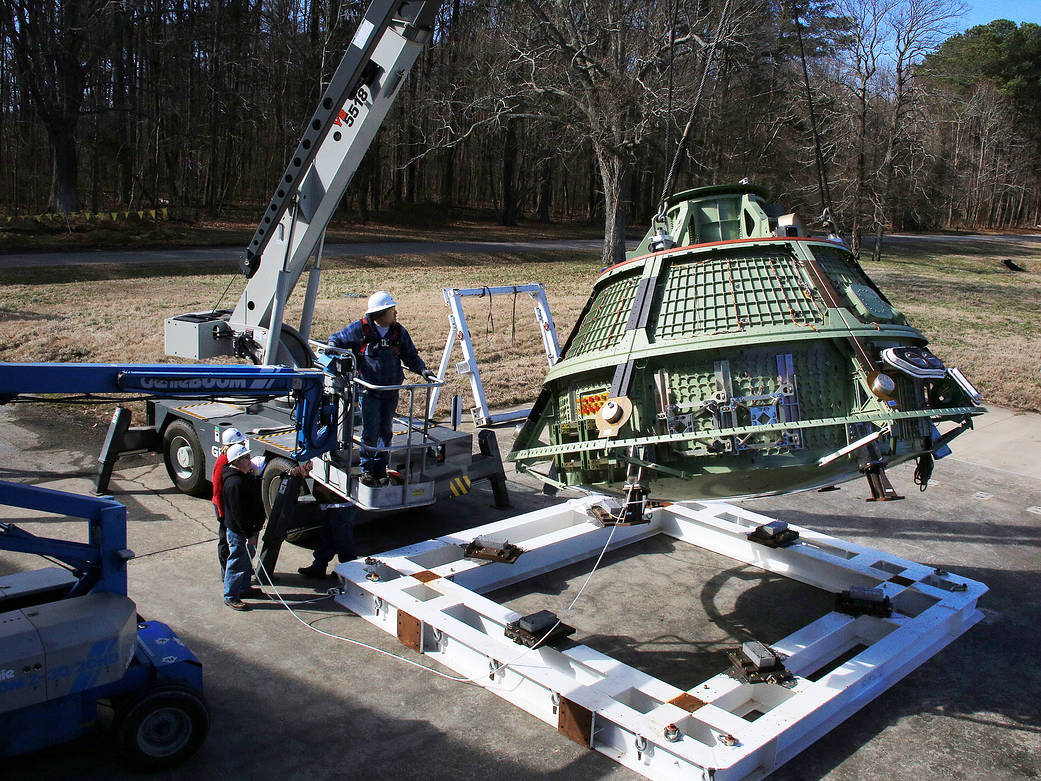
A mockup of NASA’s Orion crew module recently underwent measurement and center-of-gravity tests at NASA’s Langley Research Center in Hampton, Va., taking the Orion team one step closer to water-impact testing that will simulate ocean and landing conditions.
Engineers performed the tests to determine the angles at which the capsule must be released during upcoming water-impact tests at Langley’s Hydro Impact Basin. Water-impact tests will simulate scenarios for parachute landings, wind conditions, different velocities and wave heights the Orion spacecraft could experience when landing in the Pacific Ocean.
According to NASA SPLASH principle investigator Jim Corliss, upcoming water impacts tests provide the data needed to conduct a much more thorough and detailed assessment of the water landing models that was not possible with previous test capsules. Data retrieved will assist in understanding the loads that astronauts will experience when the actual Orion spacecraft lands in the ocean.
During water-impact testing planned for 2016, the mockup will use the heat shield from Orion’s first flight, Exploration Flight Test-1, later this year. The flight will send the spacecraft 3,600 miles above Earth before bringing it back through the atmosphere at a speed of approximately 20,000 mph and at temperatures reaching nearly 4,000 degrees Fahrenheit, after which it will splash down in the Pacific Ocean.
Credit: NASA/David C. Bowman

























